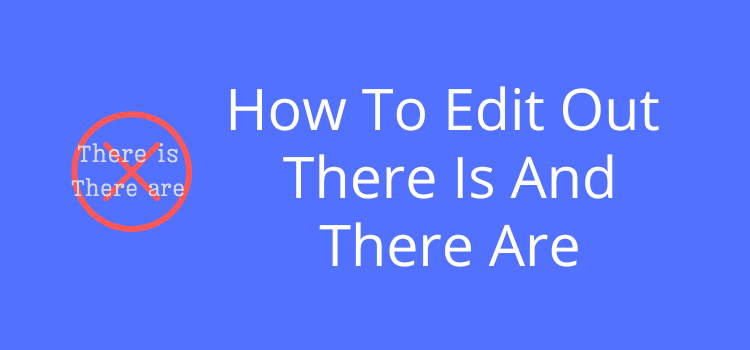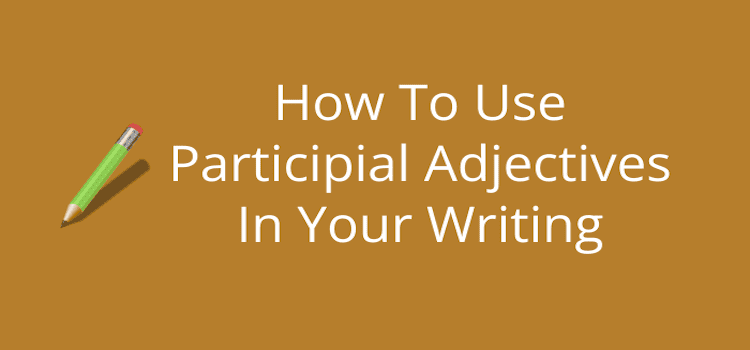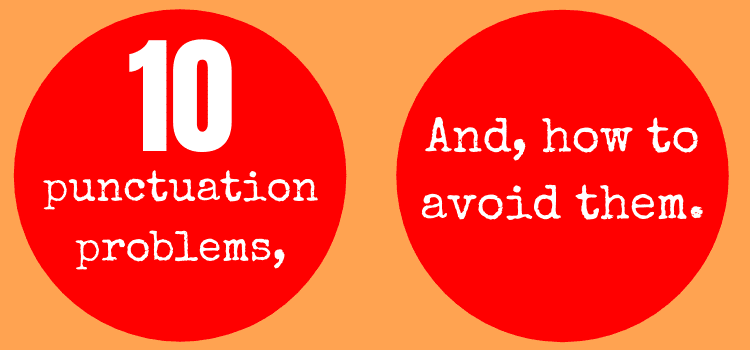
It’s very common to use sentences that begin with there is and there are. But using these two structures too often can weaken your writing.
Whenever you see one, it’s always a good idea to consider editing the sentence. Sometimes, it’s as simple as deleting the word there and moving the verb.
There is a violent storm forecast for tomorrow. A violent storm is forecast for tomorrow.
However, we use other forms that can sometimes be more complex and need more editing. But in most cases, it’s possible to change a sentence to remove these two structures to make your writing clearer and more precise.
What does “there” mean?
When we start a sentence with there and the verb to be, it is called the grammatical expletive.
The word expletive derives from Latin, meaning to fill or fill out.
In use, it is a word or short phrase that fills out a sentence without adding to the sense.
When we start sentences with there is and there are, there is a pseudo or dummy subject of a sentence. It has no meaning other than to say something exists.
There is an oak tree in the park. (An oak tree exists in the park.)
In other tenses, such as there was or there will be, there can mean occurred or will occur.
There was a loud noise. (A loud noise occurred.)
There will be a celebration parade tomorrow. (A celebration parade will occur tomorrow.)
Because it’s a simple structure, it’s easy to overuse the grammatical expletive in writing.
That’s why you need to check and limit how often you use it. In most cases, you can do a quick edit to change a sentence.
Find the real subject
Whenever you write a sentence starting with there, you will find the real subject later. One of the easiest is when you see a personal pronoun like you, we, or they.
There is no reason for you to shout at me.
Simply rewrite the sentence using the pronoun as the subject, and use an appropriate verb.
You have no reason to shout at me.
With other subjects, it’s just as easy. Here’s a quick example.
There are lots of writers who love a grammar challenge.
The real subject is “lots of writers.” So all you need to do is use it to start the sentence.
Lots of writers love a grammar challenge.
As you can see, the sentence is clearer, less wordy, and doesn’t need the relative pronoun, who. Another benefit is that you move the action verb, which in this case is love.
When you get into the habit of looking for the real subject, editing these sentences becomes very easy. In a more complex sentence, you might find a few alternatives.
The real subject here is “a couple of scratches,” but it can also be the object.
There are a couple of scratches on the screen, but otherwise, it looks like new.
A couple of scratches are on the screen, but otherwise, it looks like new. (Subject)
It looks like new, apart from a couple of scratches on the screen. (Object)
Checking verb agreement
One of the strange aspects of using there is and there are is deciding when to use the singular or plural form.
In most instances, it’s pretty straightforward.
There is a sofa in the living room. (Singlar)
There are two sofas in the living room. (Plural)
But when you nominate two individual items, the grammar can make for an awkward sentence.
There is a sofa and a lamp in the living room. (Incorrect)
If you write the sentence without there, you can see the problem.
A sofa and a lamp are in the living room.
Because the sentence contains two items, it’s plural. Therefore, when using there, it also needs to be plural.
There are a sofa and a lamp in the living room. (Correct)
But as you can see, the correct form reads quite poorly. With these types of plural sentences, it’s always best to rewrite them without using there are.
Uses in literature
You can find many examples of the expletive in literature using there is and there are.
We all know this one.
There is no place like home. – Wizard of Oz.
Others include:
There was no possibility of taking a walk that day. – Jane Eyre
There are four seasons in the mind of man. – La Belle Dame sans Merci
Often the use is to move the emphasis in a sentence or to create suspense or mystery.
There was a loud explosion, followed by an eerie silence.
But in this example, removing the expletive wouldn’t retain the sense of mystery. It would be a statement of fact.
A loud explosion was followed by an eerie silence.
When writing fiction, there are more uses for the expletive. However, it shouldn’t be overused as it could diminish and weaken a text.
Moving the emphasis
Expletive sentences exist because they have a use.
One of the main reasons to use it is to move the emphasis to earlier or later in a sentence.
Here are two examples.
I read your new manuscript and came across a few problems.
There were a few problems I came across reading your new manuscript.
There are a couple of things you can do to eliminate the expletive.
To eliminate the expletive, you can do a couple of things.
You can see how easy it is to change your sentence to move a key phrase to earlier or later.
Summary
We use there is and there are a lot when we speak because it’s an easy way to give information.
But in writing, using these forms too much can weaken your writing and often make it more wordy than necessary.
The best approach is to look at when and why you use it.
When you make it a habit to check, you’ll find that you can often change or edit a sentence to make it read much better.
For me, it is one of the two habitual checks I do on anything I write. The other is checking for passive voice use.
In a sense, they are similar because they both can weaken a text.
But there is a time and place for all grammatical structures. The key to good writing is knowing when to use them.
Related Reading: Really And Very Are (Not Always) Poor Word Choices




Thanks to Derek for excellent advice and examples. For many, combing out the there-ares can be just the first step in beefing up sentences to make description not only more vivid, but more reflective of the POV of that scene’s POV character. When you change “There is an award plaque hanging on the wall” to something like “An award plaque hung on the wall,” that opens possibilities for other verbs: “An award plaque bragged about Fred’s win from its prominent place on the wall,” “taunted his friends,” “mocked him with the 2nd-place reminder,” etc. The possibilities become near limitless. Good post, Derek!
Good insight, I have been looking for a quick solution for editing there are and there is in sentences. Thank you